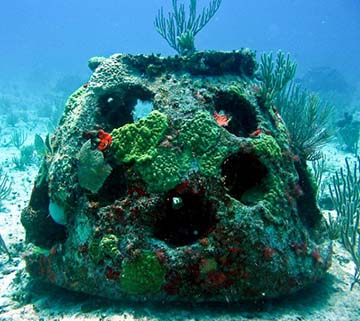A Growing Business in Eco-friendly Burials
Here’s a grim statistic: The estimated funeral costs for the baby boomer generation will be half a trillion dollars. Now many members of that demographic are looking for alternatives to expensive contemporary burials and funerals. It’s not just about the money though;
out of concern for the environment, more and more people are now opting for green burials, opening up
opportunities for entrepreneurs who provide such services.
A lot of the things people typically buy to lay their loved ones to rest can pollute the earth and downplay the element of death. Embalming fluid prevents the natural decomposition of a cadaver and is toxic to the environment. Burials often feature big metal caskets that look more like a Cadillac than a coffin, and AstroTurf around the grave that prevents mourners from seeing dirt.
Going back to more traditional rituals from before the U.S. started using embalming fluid in the Civil War, a green burial does not use toxic chemicals. The dead are placed in biodegradable pine boxes or shrouds, and buried in holes dug by shovels without a cement vault.
Joe Sehee, the founder of the Green Burial Council, a nonprofit that certifies cemeteries and funeral-related businesses as environmentally conscious, says the green burial industry is altering the traditional funeral industry. “We have this antiquated, merchandise-based model that is starting to change,” he says. “People are entering the field on the cemetery side, a whole new breed of funeral directors, morticians, and casket makers have been born, and all of them find a great deal of honor in this work, but don’t want to be merchants.”
Call for Social Responsibility
Billy Campbell, a family doctor in Westminster, South Carolina, opened the first conservation burial grounds, or “green cemetery,” in the U.S. in 1998–a 71-acre swath of preserved forest land in Appalachia named Ramsey Creek Preserve. Since then, Campbell and his wife Kimberley have buried 300 people and sold another 400 graves. But Ramsey Creek is not the only green cemetery of its kind anymore. With help from the Green Burial Council, there are now 36 green burial grounds across the country.
“If there has ever been a business that needs social responsibility, it’s the death care industry. The current industry is out of touch with what people want,” said Campbell, who had just finished digging a grave, in a phone interview. “It’s not the waste of land, it’s the waste of potential. It’s just weird, it’s a denial of death–why would you want to bury someone who looks like they are sleeping? All the products you’re buying and burying in the ground every year has made a lot of people feel like the process is not in touch with their values.”
Campbell cites an AARP report that found that over 30 percent of the baby boomer generation said they would like some kind of green burial. With the cost of a grave at Ramsey Creek set at $2,400–and no extra costs or merchandise to buy–people can save thousands of dollars in funeral costs while saving the environment from pollutants, Campbell says. Conservation burial grounds are permanent nature preserves, he adds–the more people buried, the more acres that will remain wild.
Bringing Closure
Luc Nadeau, the founder of Nature’s Casket, a recycled pine coffin company in Longmont, Colorado, said he got the idea to enter the green burial industry eight years ago after realizing a pile of wood pallets in his backyard would make a good coffin. He ended up giving those pallets away, but in 2008 a beetle epidemic killed 3 million acres of blue-stained pine–the perfect wood for a traditional box. Since then, he has used that inventory to make 150 caskets by hand out of his garage, without cutting down any trees.
Compared to metal caskets, which pollute graves and can cost more than $2,000, Nadeau’s locally sourced caskets are sustainable and cost around $800. He says that although it can be a morbid field to work in, it’s a meaningful trade to make environmentally conscious caskets for people in need.
“It’s a gratifying business,” he says. “It’s meaningful, my customers are grateful, and I’m able to help people at a vulnerable time.”

Nadeau says green burials help to bring a better sense of closure compared to the contemporary funeral, which has taken shape “to euphemize death–graveyards became cemeteries, coffins became caskets, and undertakers became funeral directors,” he says. “People value the older tradition that brings us to deal directly with death.”
Signs of Change
Green burials can take a variety of forms–Sarasota, Florida-based Eternal Reefs, for example, will mix your loved one’s cremated remains into a eco-friendly cement reef ball and place it in the ocean–and awareness of the options is spreading. To further the cause, Amy Cunningham, the funeral director and celebrant of Brooklyn, New York-based Greenwood Heights Funeral & Cremation Services, hosts education seminars to help people learn the rules of green burial. She also runs a blog, The Inspired Funeral, which highlights green cemeteries and environmentally conscious urns, shrouds, and other products.
Photo: A memorial reef containing cremated remains, made by Eternal Reefs, Florida.
Originally published by Inc, author Will Yakowicz.


Leave a Comment
You must be logged in to post a comment.